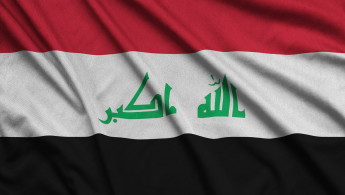Baghdad's four decades of conflict and strife
The New Arab reflects upon the Iraqi capital's turbulent four decades:
The 1980s: Insulation from the realities of war
The Iraqi dissident and writer Kanan Makiya once summed up the Victory Arch in Baghdad, the recognisable monument of two swords with hands modelled after Saddam Hussein's, as "Nuremberg and Las Vegas all rolled in one."
The Baghdad of the 1980s could well, in many ways, be summed up as a combination of the Nuremberg of the 1930s, for its authoritarianism and omnipresent portraits of Saddam Hussein, and the Vegas of '80s, for its brash decadence.
The decade was generally a good one for many of Baghdad's residents, especially when compared with the following three decades. While the Iran-Iraq War (1980-88) did kill hundreds-of-thousands of Iraqi soldiers, the war had little direct effect on residents of the city like later conflicts did.
At the beginning of the war, which Iraq launched with a large-scale invasion of western Iran in September 1980, Thames TV correspondent Peter Gill visited the city. At the time, Baghdad was being hit by sporadic Iranian air raids, mostly against economic targets in an attempt to hinder the Iraqi war effort. Gill noted that those early raids brought "only temporary terror" to Baghdad and its population seemingly remained "peculiarly content to be at war", so long as it remained on the winning side.
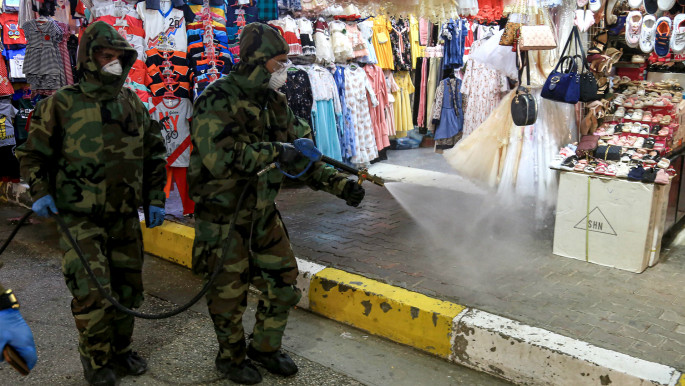 |
|
| Read also: The Iraq Report: An outbreak of virus and violence rocks Iraq |
In those days, Iraqi President Saddam Hussein used Baghdad, which saw rapid development thanks to the rise in oil prices the previous decade, as a "happy contrast" to Ayatollah Ruhollah Khomeini's far more conservative Islamist regime in neighbouring Iran. Western reporters visiting the city throughout the 1980s often pointed out that the number of unveiled women in contrast to Iran, where the veil was being made compulsory for all Iranian women.
"Women wear tight jeans and brightly coloured blouses instead of the full-length 'chadour' required in Tehran," wrote journalist Andrew Alexander in 1987. "Liquor is served in most restaurants."
In 1986, Baghdad was home to about half-a-dozen nightclubs, albeit lacking the Asian and European dancers they once had. During the 1980s, some of Baghdad's nightclubs even had stripper performances, and there were gambling casinos in the capital.
 |
During the 1980s, some of Baghdad's nightclubs even had stripper performances, and there were gambling casinos in the capital |  |
Michael Ross, a journalist for the Los Angeles Times, wrote in 1987 that Baghdad's "well heeled still prowl the discotheques on Thursday night and go to the [horse] races on Fridays."
"Those with less money and more time to kill crowd the video-game parlours downtown," he added, "practicing for war by waging imaginary battles against waves of enemy spaceships."
Bowling also became a past time of many middle-class and upper-class Iraqis. However, the bowling business in Baghdad declined by 1987 over fears of Iranian missile strikes.
Saddam used billions of dollars in loans that Saudi Arabia and other Gulf countries loaned his regime for the war effort to build a new modern airport, improve the country's infrastructure and build tourist facilities, including the high-end Al Rasheed Hotel. Iraqis at the time bragged that the Al Rasheed was destined to become the most luxurious hotel in the world, second only to the Waldorf Astoria in New York City.
Most of these efforts were made ahead of the Conference of the Non-Aligned Nations in 1983. Saddam sought to utilise that conference to demonstrate Iraq's stability despite its raging border war with Iran, building an enormous conference hall in anticipation of the event.
 |
Iraqis at the time bragged that the Al Rasheed was destined to become the most luxurious hotel in the world, second only to the Waldorf Astoria in New York City |  |
The Non-Aligned nations, however, relocated its 1983 conference to India's New Delhi over fears of Iranian air strikes on Baghdad.
By the summer of 1982, Iraqi forces were routed from Iran and Tehran launched a counteroffensive, dragging on the war for another six years. Even though Baghdad was no longer on the offensive, Baghdad's residents remained sheltered from the dire realities of the war.
"You see few posters on the street exhorting the citizenry to greater wartime efforts," reported William S. Ellis in The National Geographic in 1985. "Iraqis in Baghdad are reluctant to speak of the war. They seem to have shut it out of their minds and certainly out of their city."
In early 1987, Ross also noted that "Baghdad still looks and behaves in many ways as if it doesn't realise that it is just 85 miles from the front lines of a conflict that has lasted longer than World War II."
The regime, he reported, actively sought to conceal and "insulate" Baghdad's civilian residents from the cost of the war. For example, casualties from the front were sent to the Iraqi capital overnight by rail then stored in a giant refrigerated warehouse. Then, the regime sent the bodies "in small batches to their relatives, so as to prevent any mass spectacle of grief that might damage morale."
One Western diplomat told journalist Andrew Alexander around the same time that this was because the regime did not "want 10 bodies arriving on the same block at the same time" since that "destroys morale."
Public funerals were also banned for similar reasons and families were prevented from placing large numbers of black banners signifying the loss of a family member in the war. This was in stark contrast to Iran, where the large number of martyrs the depleting war created were publicly commemorated, and still are to this day, with public portraits of those slain in combat.
Interestingly, in the mid-1980s, it was quite easy for Americans to visit and conduct business in the Iraqi capital. A May 1984 report by Christopher Lofting in The Tampa Tribute noted that even when Iranian airstrikes struck Baghdad "there was little commercial disruption."
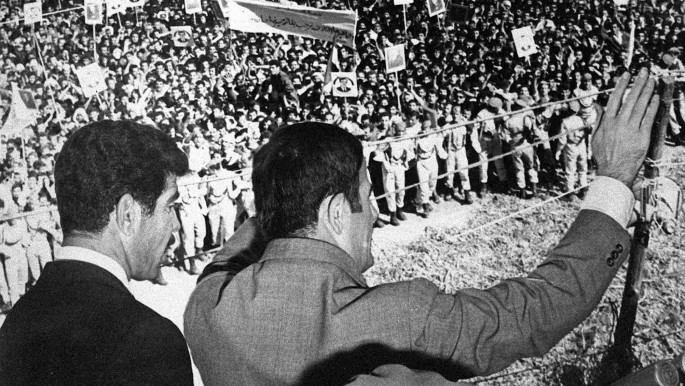 |
|
| Read also: A history of Iraq-Syria relations |
While the US State Department cautioned Americans against visiting Iraq at the time, it notably did not advise against "travel to Baghdad and most areas in Iraq", just the country's unstable border regions with Iran.
"One reason visitors can do business in Iraq in the midst of a prolonged and bloody conflict, is that – unlike in Lebanon – Iraq's war is concentrated among the Iran-Iraqi border a good distance from the capital city of Baghdad," noted Lofting.
In 1985, following Iraqi attacks on Iranian oil facilities, Iran began firing Scud ballistic missiles at the Iraqi capital. Reporting from Baghdad in 1986, investigative journalist Jack Anderson noted that Iran often began missile strikes on Thursday nights, the start of the weekend in Iraq, since the streets were crowded. One gallows Iraqi joke in Baghdad in those days described these strikes as the ayatollah's "Thursday night fever."
Saddam was outraged by these attacks, and his regime initially sought to downplay the first missile strikes, claiming the explosions they caused were actually car bombings carried out by Iranian-backed insurgents. The Iraqi military attaché in Paris discouraged such claims by warning that they "might suggest to the Europeans that Iraq was facing internal difficulties."
Life still had its difficulties for many of Baghdad's residents throughout the war. At times there were sporadic shortages of particular food items. Iraqis were forbidden from travelling outside the country and needed permits to buy telephones and even typewriters. Iraqis caught trading on the black market were also sentenced to death.
Some streets in the capital were closed off by armed guards and concrete barriers to shield government and military buildings, making walking around the city difficult at times. Bomb attacks carried about by groups sympathetic to Iran, such as the Shia Dawa group, became a more common occurrence than Iranian air and missiles strikes.
However, economically Iraq and many of its people were still well off, so much so that tens-of-thousands of foreign workers, including about a million Egyptians, moved to Baghdad to do the more menial jobs that many Iraqis did not do in those days.
 |
Economically Iraq and many of its people were still well off, so much so that tens-of-thousands of foreign workers, including about a million Egyptians, moved to Baghdad to do the more menial jobs that many Iraqis did not do in those days |  |
However, a lot of those Egyptians were severely ill-treated during their time in Baghdad, especially as the war came to an end late in the decade. In November 1989, according to a Reuters report, Egyptians left Iraq in droves, claiming that discharged Iraqi soldiers, many of whom wanted their jobs, beat and even murdered some of them.
Over 1,100 bodies of Egyptians working in Iraq were returned to Cairo in 1989. Baghdad claimed the deaths were due to natural causes. Egyptians were also infuriated when they weren't paid for months on end and when Baghdad limited by more than half the amount of money they could send home from $70 per month to a mere $30.
By the end of the 1980s, Egypt's guest-worker community had disappeared.
Despite the city's economic prosperity in those days, most Baghdadis still shared houses with about three-generations of their family. They lived in public housing projects on the capital's outskirts while the more affluent and middle-income families lived in lush residential areas, such as Mansour, surrounded by their gardens and high walls.
The end of the Iran-Iraq War in August 1988 left Iraq crippled by debt and with a crippled economy. In 1989, the situation became increasingly tense, and another war that would have long-lasting ramifications for Baghdad and its people was just around the corner.
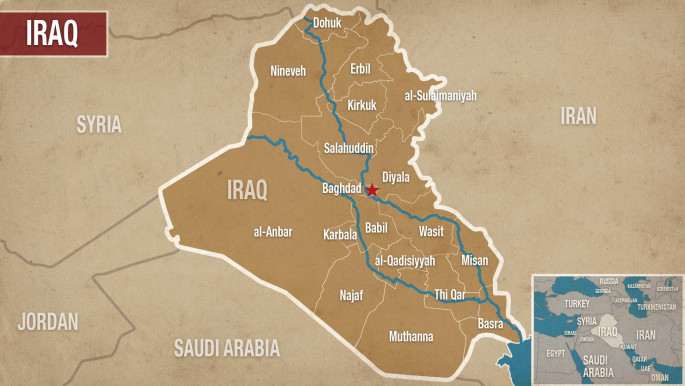 |
|
The 1990s: Sanctions, hunger and poverty
In one fell scoop, Saddam Hussein antagonised the entire world when he invaded and annexed neighbouring Kuwait in August 1990. The United States amassed an enormous military coalition to kick him out and did so in the 1991 Persian Gulf War, which decimated Iraq's military and left the country internationally isolated.
Shortly after the Kuwait invasion, William S. Ellis once again returned to the Iraqi capital, and he once again found a sense of normalcy prevailing there as he had previously experienced during the Iran-Iraq War.
"Iraq is most likely striving to maintain the appearance of normalcy within the boundaries of its major city," he wrote. "Through it all, Baghdad manages to wear a look of prosperity and, to a certain degree, peace."
Upon evaluating the new modern high-rise apartment complexes and monuments erected in the city in the preceding, Ellis concluded by observing that: "The face of Baghdad is new, but it is a city with a soul that is spent."
The Iraqi capital became the centre of Western news reports beginning with the US-led coalition's bombing of various targets in the city at the beginning of Operation Desert Storm. Journalist Peter Arnett reported live directly from Baghdad for CNN throughout the war. Television viewers around the world watched the bombing in real-time in grainy green night-vision footage of Iraqi anti-aircraft guns firing frantically into the air in hopes of hitting US jets.
While the United States touted its use of modern precision-guided smart bombs throughout that conflict, the bombing did affect the civilian population. In one tragic incident on February 13, 1991, a 2,000-pound penetration bomb struck a public shelter which the Americans said they had mistaken for a military bunker. The bomb killed over 300 Iraqi civilians, most of them women and children.
Journalist John Simpson reported on the horrific sight of "bodies fused together so that they formed entire blocks of flesh" along with "a layer of melted human fat an inch deep lying on the surface of the water pumped in by the firemen."
 |
Journalist John Simpson reported on the horrific sight of 'bodies fused together so that they formed entire blocks of flesh' along with 'a layer of melted human fat an inch deep lying on the surface of the water pumped in by the firemen' |  |
The bombing campaign also decimated Iraq's electricity infrastructure, which never fully recovered.
The Gulf War ended with a ceasefire shortly after that. Saddam Hussein brutally crushed an enormous Shia and Kurdish uprising that spread across the country but did not directly affect Baghdad.
Wide-ranging UN sanctions imposed on Iraq as a result of the Kuwait invasion remained in place until 2003 and had terrible effects on Iraq's civilian population and society.
In 1992, journalist Lee Hancock reported that while there was still a "seeming abundance of food in Baghdad it just seems Iraqis cannot afford it."
That was because Iraq's currency the dinar had plummeted in value while the regime also reduced the amount of subsidised food. One Iraqi dinar bought up to $3 in 1990 before the war. In 1994, it took 600 dinars to buy a single dollar. By 2001 it dropped further, to a mind-blowing 1,720 dinars per dollar.
Most Baghdadis lived on fixed incomes and, therefore, could buy next to nothing with their salaries. An average schoolteacher in Baghdad, for example, would be lucky to get two chickens in return for a full month's salary.
Corruption and poverty in the 1990s devastated Iraq's education sector, one of the best in the entire region in the 1980s, and the crime rate doubled. Unsurprisingly, many Iraqis resorted to trading on the black market.
Sanctions also had adverse effects on the medical supplies in the country. Hancock noted that before the Kuwait invasion, Iraq imported on average $500 million medicine and medical equipment each year. Sanctions reduced this to approximately $50 million.
"As a result polio and malnutrition related diseases became less rare," he wrote.
Infant mortality rates also skyrocketed during this period.
Electricity shortages caused by the destruction of the country's power grid – which couldn't rapidly be rebuilt thanks to sanctions – also meant that Baghdad lacked electricity for powering sewage treatment plants or for water purification. This predictably led to an increase in people suffering from a myriad of otherwise easily treatable diseases.
 |
Infant mortality rates also skyrocketed during this period |  |
Sanctions also contributed to a fundamental transformation of Iraq's society, which became far more religious and conservative as part of the regime's so-called Faith Campaign that began in 1993.
"Government television breaks programming for prayers five times a day and features long lectures by religious sheiks," reported Kim Murphy for The Los Angeles Times in 1994.
The public sale of alcohol was banned and the regime "implemented strict Islamic punishments for thieves" which included hand amputations. Brutal groups like the Fedayeen Saddam militia terrorised the population.
All of this was a far cry from the early 1980s when Iraq strove to distinguish its more secular society from that of the ayatollah's Islamist-ruled Iran.
Murphy quoted then speaker of the Iraqi Parliament Saadi Mahdi Salih on this state-sponsored religiosity.
"You in the West are driving the region toward this kind of practice, because when unjust pressure is put upon societies, those societies cannot answer back the way they would like to, and then they will go to God and pray," he said.
"When unjust pressure comes, religions becomes stronger, and as a conclusion it would end up declaring 'jihadi' against those who are practicing these unjust deeds."
Journalist Patrick Cockburn found ample evidence of the growing hunger in Baghdad during this period. Before sanctions, approximately one-third of Baghdad's garbage consisted of food scraps and leftovers. Following sanctions, absolutely nothing that could be consumed was discarded.
Such observations led Cockburn to conclude that sanctions were a bigger, albeit comparably 'silent', killer of ordinary Iraqis than war.
The regime even closed ice cream parlours given their usage of large amounts of sugar, then a rationed commodity.
Iraq's middle-class was decimated by these years of deprivations. Sanctions unwittingly helped keep Saddam Hussein in power.
As one academic report retrospectively noted: "the imposition of sanctions eliminated the political power of the country's middle classes – what was described as 'the foremost potential source of opposition to [Hussein's] dictatorial regime' – while inflating the power of a few thousand landowners, smugglers, and those nearest to Hussein's orbit, the Iraqi leader enhanced his power throughout the 1990s and prevented the emergence of any real opposition to the government."
The United States also bombed Iraq during the decade, including Baghdad on two notable occasions.
 |
Before sanctions, approximately one-third of Baghdad's garbage consisted of food scraps and leftovers. Following sanctions, absolutely nothing that could be consumed was discarded |  |
On June 27, 1993, US President Bill Clinton fired Tomahawk cruise missiles at an Iraqi intelligence building in Baghdad, in response to an Iraqi assassination attempt against former President George H.W. Bush on a visit to Kuwait earlier that year.
The missile strike killed Layla Al-Attar, an Iraqi artist and painter who expressed feminist ideals through her art, whose house was behind the targeted building.
In December 1998, the US and Britain subjected Iraq to a four-day bombing campaign, which they justified as a response to Iraq's noncompliance with UN weapons inspections. Unlike the opening salvos of Desert Storm, however, the lights largely remained on in Baghdad, life seemed to go on as normal, and the campaign was very short-lived.
As one report in The Baltimore Sun from the time summed it up: "Many Iraqis seem resigned to the strikes, indifferent, nonplused."
Wealthy elites in Baghdad close to the regime still prospered throughout the 1990s thanks to proceeds from its smuggling operations. A revealing documentary from 2000 noted that many of them went to restaurants and paid for meals that would cost ordinary Iraqis an entire year's salary. They were consequently viewed with bitter contempt by many struggling Iraqis who referred to them as "war rats."
A manager of a Kentucky Fried Chicken knockoff in Baghdad at the time named al-Sa'ah restaurant told a visiting journalist "Tell the Americans that here we eat Iraqi Kentucky made with Iraqi chicken. For us, this is defiance."
As AP noted, however, a decade of sanctions "created two classes in Saddam Hussein's Iraq, a small comfortable minority that can afford faux Kentucky Fried Chicken and Swiss watches, and an overwhelming majority whose income has been so devalued that few Iraqis can afford a helping of chicken at al-Sa'ah."
The controversial UN Oil-for-Food program gave a lot of struggling Iraqis some respite later in the decade. Ultimately, however, the crippling sanctions did irreparable damage to the country's people and society.
Meanwhile, Saddam Hussein touted many new megaprojects he intended to build to cement his legacy, including the largest mosque in the world, called the Saddam Grand Mosque, in Baghdad. The Iraqi dictator also constructed several new palaces for himself across the country despite the crippling embargo.
The 2000s: Bombings, instability and terror
The early 2000s saw some indications that life in Baghdad was gradually improving. Journalist Jason Burke visited the Iraqi capital in January 2001. He profiled a new upscale restaurant in the city called the Castello and observed that things were improving in Baghdad for both the uber-wealthy as well as the destitute poor.
"From the nouveaux riches sampling the Castello's châteaubriand to the beggars who have barely tasted meat in a decade, everyone in Baghdad agrees that things are looking up," Burke wrote.
"Once, the city's streets were full of rubble and stank of sewage, rotting rubbish, violence and fear," he added. "Now – as the trade embargo imposed after the Iraqi invasion of Kuwait moves into its 11th year – they are full of traffic, brightly lit shops and consumer goods."
"There are still spots of appalling misery and deprivation, but everyone says things are changing, that the worst is over, that they have survived."
Upon the onset of the US-led War on Terror following the September 11, 2001, terrorist attacks on the United States Iraq soon came into the crosshairs of the George W. Bush administration. Even though his regime played no role in those terrorist attacks, Saddam was charged with concealing weapons of mass destruction and deemed an urgent threat by the United States and the United Kingdom, which readied for war.
When journalist Cameron McWhirter visited Baghdad in October 2002, he found a people "plagued by war fears, besieged by imposed economic hardship, angry at the United States and uneasy about their future."
 |
When journalist Cameron McWhirter visited Baghdad in October 2002, he found a people 'plagued by war fears, besieged by imposed economic hardship, angry at the United States and uneasy about their future' |  |
Iraqis in those days also recalled their fears of bombings, citing memories from the 1991 Gulf War. Incidentally, the bombing of Baghdad during the Anglo-American invasion of March 2003 hit many of the same targets that were previously targeted in 1991 and rebuilt in the intervening years, including three telecommunications facilities.
The US-led invasion promptly brought an end to Saddam Hussein's regime. However, it also led to an occupation and horrific sectarian warfare that raged across the streets of Baghdad, terrorising ordinary civilians for years to come. The invasion also controversially uncovered no weapons of mass destruction.
While the symbolic toppling of Saddam's statue marked the end of an era of tyranny, a new era of terror and violence quickly took its place. Widespread lawlessness and looting shortly after the invasion, including the infamous desecration of Iraq's National Museum, along with terror attacks, such as the infamous murder of UN Special Representative to Iraq Sergio Vieira de Mello, were early signs that a secure, democratic and prosperous Iraq was still a long way off, if attainable at all.
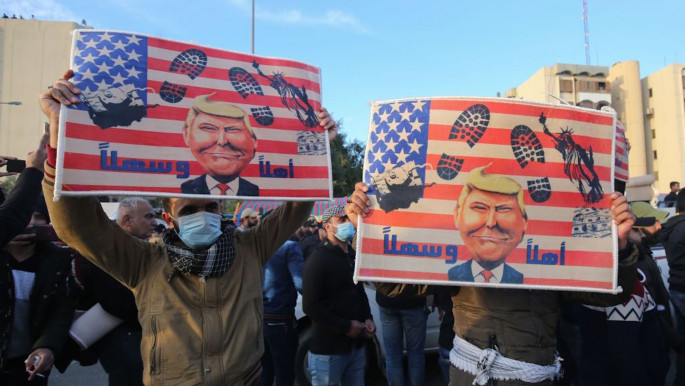 |
|
| Read also: Timeline: A history of US-Iraq relations since the 2003 war |
Students at Baghdad University interviewed before and after Saddam's overthrow did not fundamentally change their opinions and expressed their belief that the American invasion was a wanton act of aggression against Iraq and its people, scoffing at the notion that it was a liberation from Saddam's tyranny. They did, nevertheless, conceded when questioned to hearing about torture and other abuses under the old regime as well as admit the fact that they would have faced imprisonment or worse if they openly expressed certain opinions about the dictator.
While these students were conspicuously members of that comfortable and sheltered class of Iraqis, who benefited from the regime's largess, even during the years of sanctions, many other Iraqis who suffered under Saddam also deeply resented the American presence.
The decision by the US Coalition Provision Authority (CPA) interim government to disband the entire Iraqi Army in late 2003 also antagonised many Iraqis with proficient military training early in the Iraq War.
Car bombs, many of them coordinated to maximise the death toll, became a lethal terror weapon and killer of civilians, security forces and US troops for the rest of the decade. In one incident on September 30, 2004, dozens of children lost their lives in a coordinated car bomb attack in Baghdad that killed 44.
That same year, Iraqis were appalled by the disclosure of American abuses of detainees in Abu Ghraib prison, the same prison where Saddam brutally tortured and executed his opponents. Horrific images of those abuses undoubtedly helped fuel the increasingly violent opposition against the American presence.
The US found itself at times facing both a Sunni insurgency as well as battling Shia militias, including those loyal to the Iraqi cleric Muqtada al-Sadr, who vehemently opposed the US presence in the country.
 |
Car bombs, many of them coordinated to maximise the death toll, became a lethal terror weapon and killer of civilians, security forces and US troops for the rest of the decade |  |
British Prime Minister Tony Blair visited Baghdad in December 2004, the British leader since Stanley Baldwin in 1924 to do so. He came with a large security escort and admitted feeling the dangers afflicting the war-torn city.
In 2005, Iraq held parliamentary elections and also drafted a new constitution for the country. Iraq's Sunnis largely boycotted the January election and polling stations were targeted. They participated in the October constitutional referendum, mainly to try and hinder the political transformation of the country they had long dominated under the old regime.
In the December election, Sunnis also claimed that the vote was fixed in favour of Iran-backed Shia parties. The election was crucial since it was the first step toward establishing a permanent Iraqi government. However, the fact Sunnis did not outright boycott that vote gave some hope that the new Iraqi political process could work and avert a full-blown Sunni-Shia sectarian war.
The year 2006 was a particularly violent one for the Iraqi capital. The blowing up by al-Qaeda in Iraq of the shia Al-Askari Shrine in Samarra triggered widespread sectarian bloodletting and violence.
On March 29, morgue officials in Baghdad said that around 30-40 bodies were found on the streets of Baghdad each day. In April, sectarian violence killed 1,091 people in the Iraqi capital.
In July alone, Baghdad's central morgue received 1,855 bodies.
Suspected Sunni militants used suicide car bombs and mortars against Baghdad's enormous Shia-majority Sadr City slum, killing 215 people and wounded 257 on November 23.
The Shias ultimately won the so-called Battle of Baghdad in 2006. By the end of that year, they controlled three-quarters of the city, with many Sunnis forced out of their homes and neighbourhoods as a result of the violent clashes and militia retribution to the al-Qaeda attacks carried out in their name.
Violence continued into 2007.
On January 16, 65 people killed in a suicide car bombing outside Baghdad's Al-Mustansiriya University. Less than a week later, on January 22, two powerful car bombs tore through the central Baghdad market, killing 88 people and wounding 160 others.
On February 3 a large truck bomb at a Baghdad market killed about 135 and injured 339 more.
Just over a week later, on February 12, three car bombs killed up to 80 and wounded 150 more in the city during an official 15 minutes of silence to mark the first anniversary of the Al-Askari bombing.
Then-Iraqi Prime Minister Nouri al-Maliki was in the middle of a televised statement, in which he called for an end to the violence plaguing the country as well as national unity when the bombs went off.
Similarly, a mere month later, gunmen attempted to assassinate then-UN Secretary-General Ban Ki-moon on his visit to Baghdad in a rocket attack on the city's Green Zone – the heavily fortified compound established after the 2003 invasion where government buildings and foreign embassies are situated. It impacted just as Maliki was giving a press conference with Ban in which he insisted that the Secretary-General's visit indicated that Iraq was gradually stabilising.
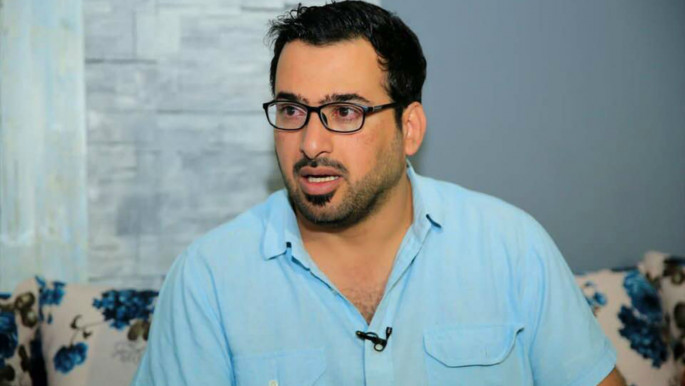 |
|
| Read also: Exclusive: 'I regret nothing,' says Bush shoe-thrower Muntadher al-Zaidi, ten years later |
On March 5, a suicide car bomber killed 38 people and injured over 100 when he detonated his vehicle in Baghdad's Mutanabbi Street, which is well-known for its bustling book market.
Read also: The Baghdad bookseller: How one woman hopes to revive the literature scene in Iraq
The same day 30 bodies bearing tell-tale signs of torture were found across the city, likely the work of Shia militias who had a preference for using power drills to torture their victims.
A week later, three blasts targeted Shia pilgrims returning to the capital, killing 47 and wounding 35.
On April 18, four bombings targeting Shia-majority areas killed at least 198.
On September 16, 2007, United States Blackwater military contractors infamously shot and killed 17 Iraqi civilians and wounded 20 others in Baghdad's Nisour Square while escorting a US embassy convoy, sparking outrage among Iraqis and harming US-Iraq relations.
On a brighter note, on January 11, 2008, Baghdad's residence awoke to the first snow in the city in over half-a-century.
On February 1, two bombs carried by women and detonated remotely killed 99 people and injured over 200.
While 2008 certainly did see continued mass killings, there was a substantial decrease in violence compared to 2007. In July 2008, AP noted that "From a daily average of 160 insurgent attacks in July 2007, the average has plummeted to about two dozen a day this month."
Furthermore, the article continued, "In Baghdad, parks are filled every weekend with families playing and picnicking with their children. That was unthinkable only a year ago."
On December 14, 2008, in his last visit to Baghdad, the outgoing President Bush had shoes thrown at him by an Iraqi journalist attending a press conference alongside Maliki.
Twitter Post
|
Violence would continue in Iraq in 2009, with over 250 suicide bombings across the country throughout the year.
However, by November, the civilian death toll in the war fell to its lowest level ever since the 2003 US-led invasion.
The 2010s: More strife, protest and glimmers of a better future
The Iraqi capital saw more violence in the 2010s and the country was gripped by the war against the notorious Islamic State group. Baghdad also saw increased protests against government corruption and the latter half of the decade gave some hopes that the cycle of violence plaguing Iraq could soon end.
The United States withdrew its last troops from Iraq in December 2011. Journalist Lolita C. Baldor reported on the low-profile nature of the withdrawal.
Instability and violence essentially destroyed Baghdad's once-thriving Christian community. The 2010 bombing of the Saydat al-Najat Church by al-Qaeda in Baghdad killed over 40 members of the congregation. Abductions of Christians by such groups saw the flight of most Christian business owners from the capital. In the Doura neighbourhood alone, there were 12,000 families at the beginning of the decade. By 2016, that number was reduced to a comparatively paltry 500.
She noted that there were no "Mission Accomplished" banners and "No victory parade down the centre of this capital scarred by nearly nine years of war. No crowds of cheering Iraqis grateful for liberation from Saddam Hussein."
 |
Abductions of Christians saw the flight of most Christian business owners from the capital |  |
The US military took a mere 45 minutes to declare the official end of the Iraq War "with a businesslike closing ceremony behind concrete blast walls in a fortified compound in Baghdad International Airport."
As part of the Maliki's government effort to once again demonstrate that Iraq's violence was not permanent Baghdad hosted the 23rd Arab League Summit in March 2011. Armed groups such as the Islamic State of Iraq vowed to prevent the summit by threatening terrorist attacks.
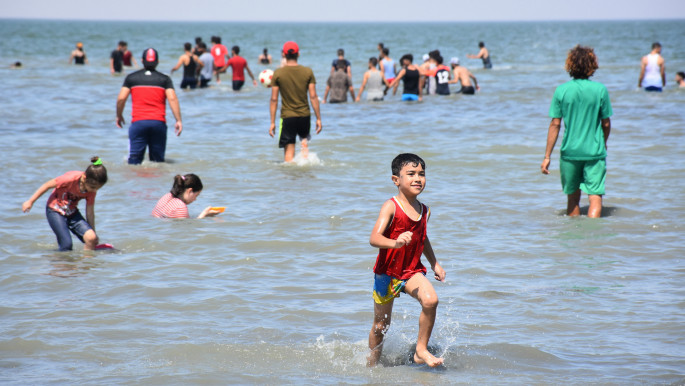 |
|
| Read also: Can Iraq finally realise its potential for tourism? |
Beefed up security averted this and the summit was a success. It was notable for many reasons. It was the third hosted in Baghdad and the first since 1990, before the Iraqi invasion of Kuwait and the Kuwaiti Emir himself attended it.
The Iraqi government spent an estimated $500 million for the renovation and repair of the Baghdad's hotels and the complete overhaul of the old Republican Palace in Baghdad's Green Zone. The war in Syria and Iraqi debts to its neighbours were the main topics of discussion.
On the tenth anniversary of Saddam Hussein's overthrow, Iraqis remained divided about the so-called 'new Iraq' that invasion created.
Reporting from the city, AP correspondents noted that Baghdad had "indelibly changed since the darkest days of the war."
Baghdadis were no longer forced to flee their neighbourhoods as a result of sectarian warfare. Bridges between predominantly Sunni and Shia communities had reopened.
Nevertheless, the Iraqi capital remained a city shared by two very different class of Iraqis. "Amid Baghdad's near-universal neglect runs a divide between Jeep-driving elites in guarded streets and the city's poor," noted the report.
Maliki's crackdown on his opponents in the first half of the 2010s raised worries about the political stability of Iraq. In December 2012, Iraqi Security Forces raided the offices and home of Rafie al-Issawi, Iraq's finance minister and a prominent figure in the al-Iraqiya political coalition.
Sunni protests against Maliki spread in 2013 and were followed by increasingly bloody crackdowns by security forces. On May 28, 2013, a wave of car bombings struck Shia neighbourhoods in Baghdad and killed at least 66. Such attacks were seen as an indicator of the deteriorating security situation in the country amidst the mounting Sunni-led protests against Maliki's government.
Then, capitalising on Iraq's divisions and instability, the Islamic State group infamously overran Iraq's second city Mosul and declared its self-styled caliphate across territories it seized in both Syria and Iraq in June 2014, symbolically erasing the international border between the two countries.
 |
Capitalising on Iraq's divisions and instability, the Islamic State group infamously overran Iraq's second city Mosul and declared its self-styled caliphate across territories it seized in both Syria and Iraq in June 2014, symbolically erasing the international border between the two countries |  |
The group advanced towards Baghdad that summer and launched bombings and mortar attacks against the city. The US administration of President Barack Obama refused to aid Iraq until Maliki stepped down, which he did. Haider al-Abadi became Iraq's new prime minister in September 2014.
While the Islamic State controlled one-third of Iraq at its peak and seemed unstoppable, the group could never hope to conquer and physically hold and occupy the Iraqi capital given the large security presence and the enormous number of Shia militiamen ready to die in defence of their city.
Read also: The scars of war: Mosul's children haunted a year after Islamic State was routed
Baghdad endured its worst-ever terror bombing on July 3, 2016, when the Islamic State carried out a coordinated attack in the shopping district of Karrada that over 340 people and injured almost 250 more.
With US support, Iraq gradually rolled back the threat posed by the group, culminating in the recapture of Mosul after a bloody and destructive urban warfare campaign in July 2017.
That year led to renewed hopes in Iraq that the cycle of violence that afflicted the country for almost 20 years was showing signs of abating.
Visiting Baghdad, Patrick Cockburn even suggested that the city and the country may have hopes of restoring the stability and prosperity last seen in the late 1970s, before the onset of the Iran-Iraq War. He, nevertheless, cautioned his optimism.
Protesters railing against government corruption increased in Iraq in the second half of the 2010s. Even in the summer of 2015, when the Islamic State still occupied Mosul, thousands of Iraqis took the streets across the city.
Read also: Reviving art and culture in Iraq's former Islamic State stronghold
In 2016, supporters of Muqtada al-Sadr even entered the city's Green Zone, which many Iraqis loathe given the insulated and luxurious lives many of the elites residing their enjoy.
Last October, the most serious protests began. Security forces and Iran-backed paramilitaries sought to suppress them with brute force. Clashes have to date killed at least 600 people and wounded 18,000 over the past six months.
Protesting Iraqis demand an end to the rampant corruption afflicting their country since 2003 and establish more representative governance. It's unclear if the post-2003 establishment can offer them a sufficient compromise or if Iraq is destined for a revolution if the protests persist – the consequences of which would be very unpredictable.
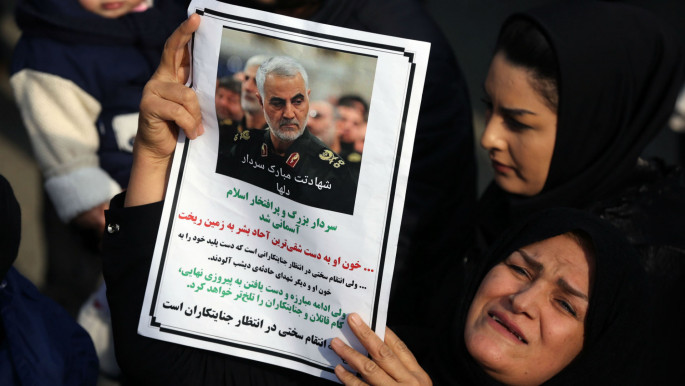 |
| Read also: The significance of Qasem Soleimani's assassination |
On January 3, 2020, a US airstrike killed both Iran's Islamic Revolutionary Guard Corps' (IRGC) extraterritorial Quds Force commander Qasem Soleimani and Iraqi Kataib Hezbollah militia leader Abu Mahdi al-Muhandis near Baghdad Airport.
Iraqis denounced the action and calls were made for the complete expulsion of the US troops, who returned to Iraq in 2014 to help train Iraqi forces for fighting the Islamic State.
Iraqis feared that their country would once again suffer the consequences of an escalating US-Iran proxy war fought on Iraqi soil.
By the end of the 2010s, Baghdad's population reached 10 million. At this rate, Baghdad will become one of the world's megacities by 2035.
"Bombs occasionally explode and tensions remain, but Baghdad feels more normal these days, vibrant even – despite the omnipresent 'martyr pictures' of police, army and militia members who died fighting," the Islamic State, reported The Guardian in January 2019.
The report profiled some of the new projects, including residential towers, that are being erected across the capital, many for the city's new middle-class.
As ever, the future of Iraq and its capital is impossible to predict. While there are some promising indicators that the prosperity and stability not seen in the last 30 years could return the dire spectre of more instability and violence, as this history demonstrates, can never be discounted.
Follow him on Twitter: @pauliddon
